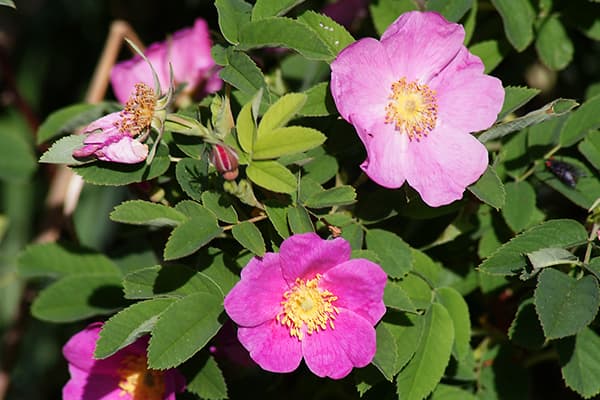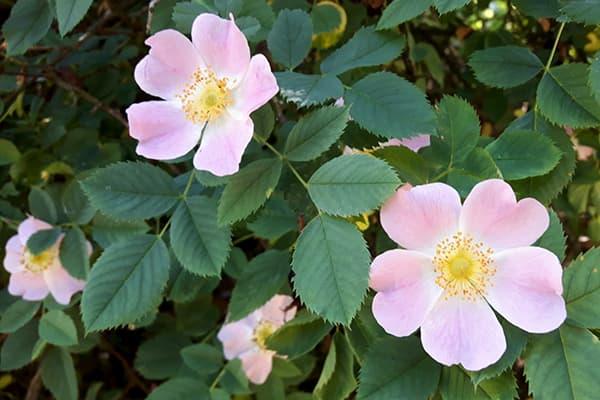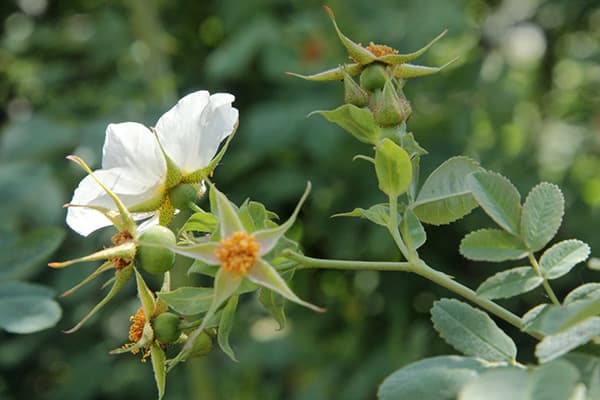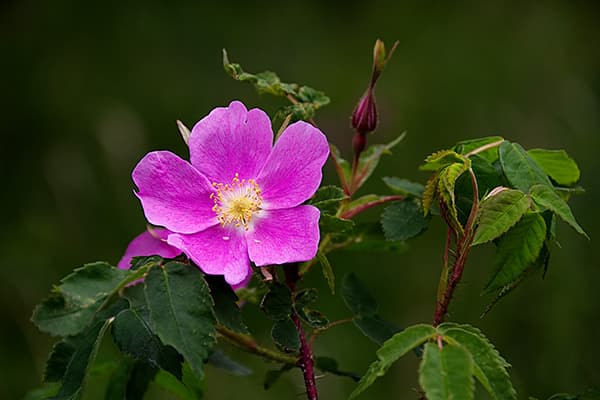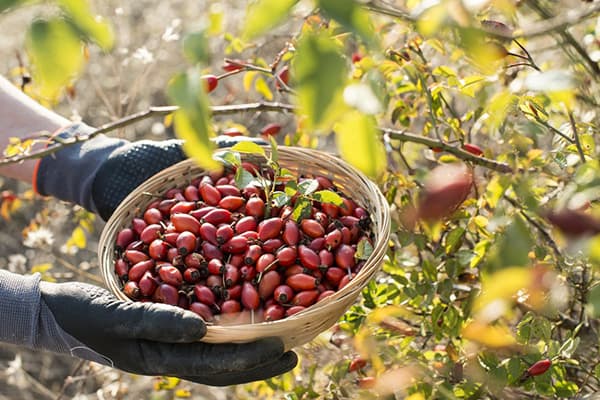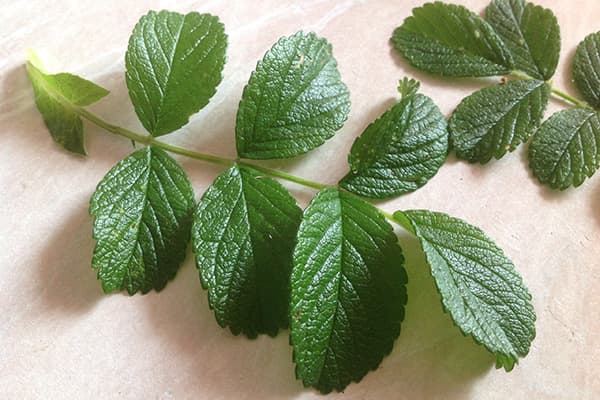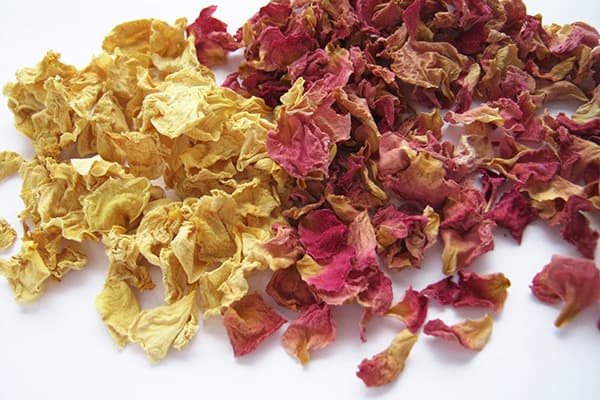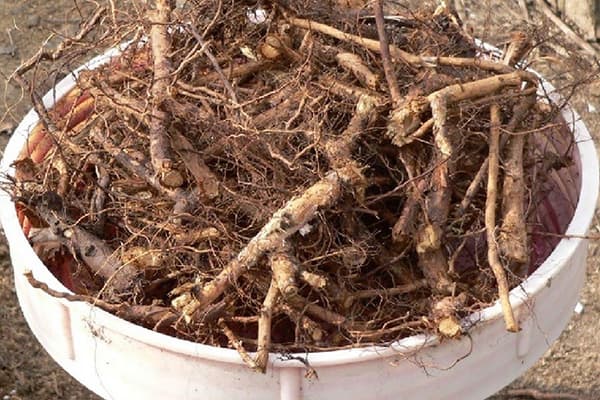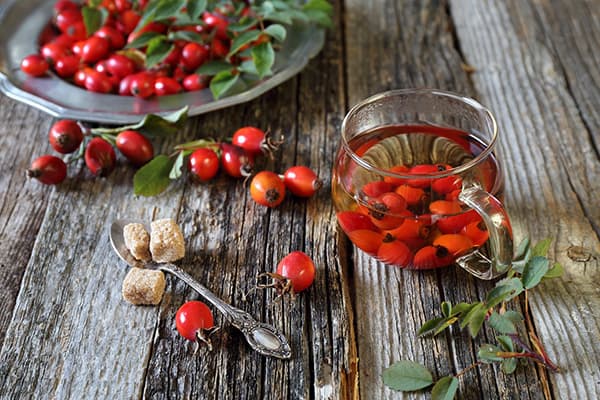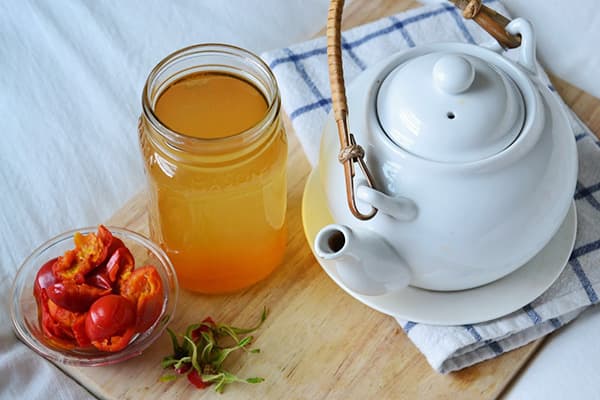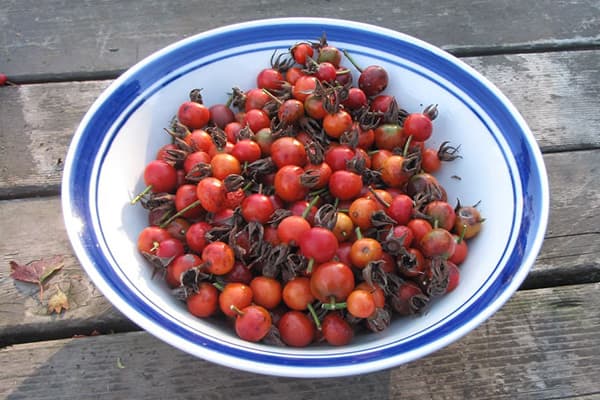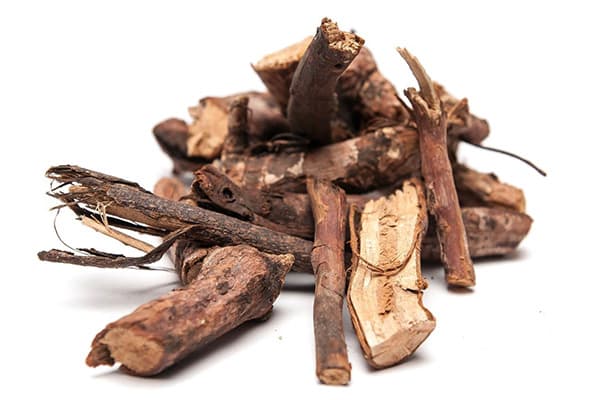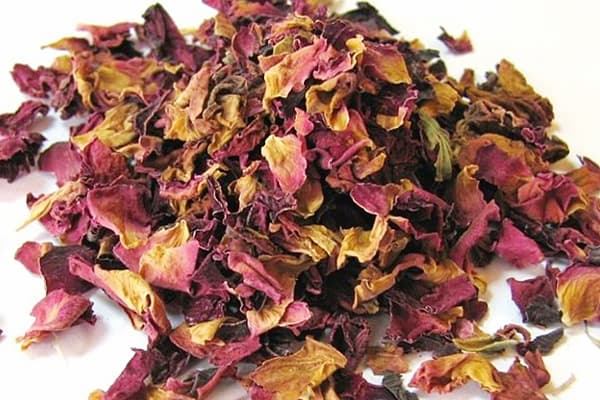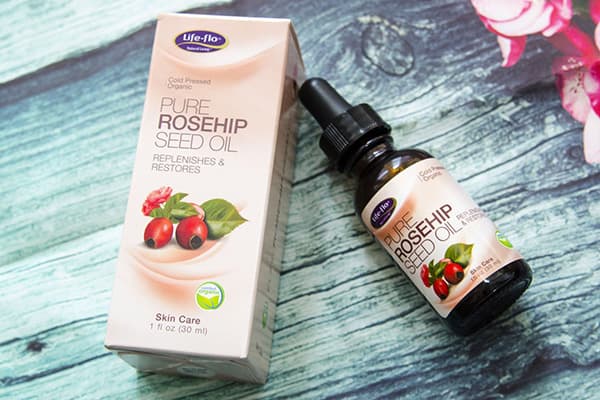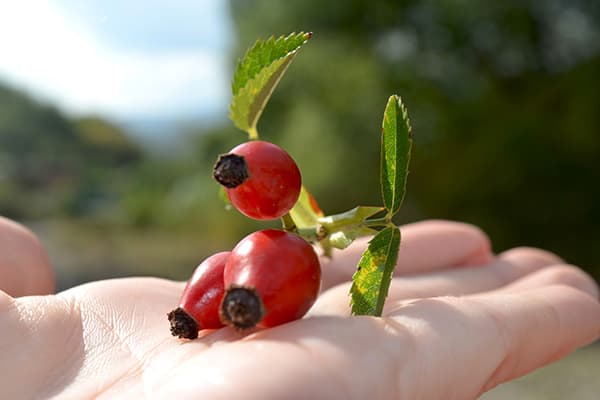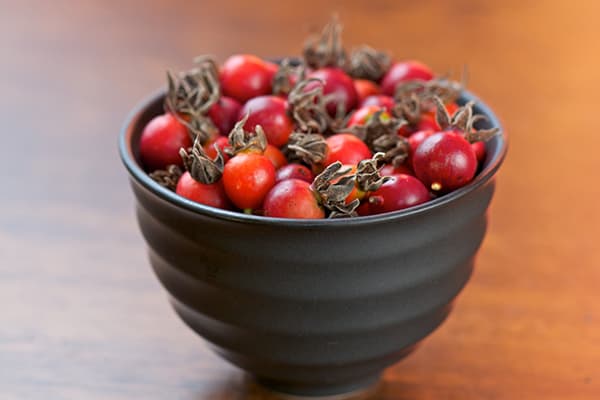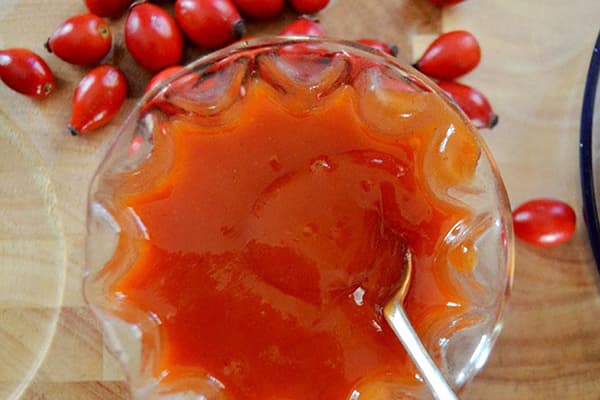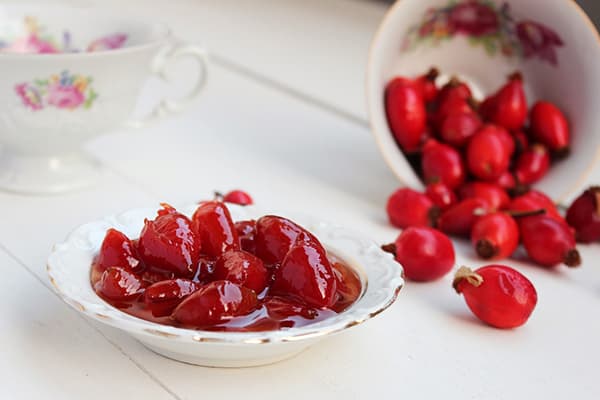A handful of rose hips for vitamin deficiency: beneficial properties and contraindications of the fruit
Content:
At the beginning of autumn, rose hips begin to ripen, the benefits of which are beyond doubt among doctors and traditional healers. These are real vitamin “bombs”. It is difficult to find berries that are richer in chemical composition than those grown on rose bushes. However, any – even the most valuable – product can cause harm to the body if used incorrectly. Let's figure out why rose hips are useful and how to take them correctly.
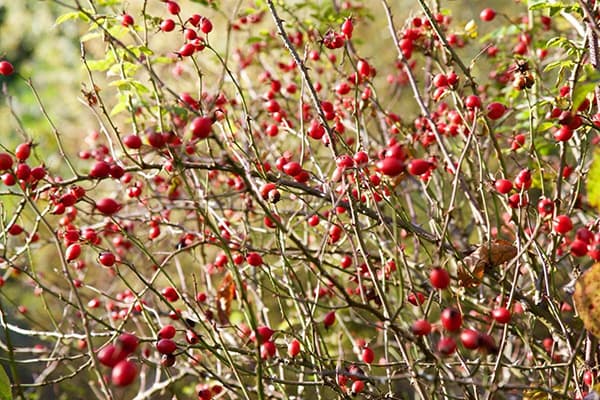
Natural diversity
Rosehip is a small shrub of the Rosaceae family. In literature it is often called a rose. Until now, botanists have not decided on the exact number of species of this plant. Some have up to 400 rose hips, others - from 300 to 500. Different types differ greatly in the content of vitamins, minerals and organic acids.
The plant is widespread in regions with temperate and subtropical climates.
In Central Europe, particularly in Russia and other countries of the former USSR, the following varieties are commonly used for medicinal purposes:
- Rose hip (Rosa majalis)
The most common type. The shrub reaches 2 meters in height, has thin shiny branches with thorns curved down. The fruits are red or bright orange, with sepals. They are distinguished by a high content of beta-carotene in the pulp and vitamin E in the seeds.
- Dog rose (Rosa canina)
A shrub with a large number of thorns, thick shoots and bright orange oblong fruits. A tea surrogate is obtained from the young leaves of the plant, and a coffee surrogate is obtained from the seeds. The vitamin composition of the fruit is not as diverse as that of Rosa majalis. However, Rosa canina has an excellent choleretic effect. From the fruits, pharmaceutical plants produce an aqueous infusion, which is part of the drug “Holosas”. The latter is used to treat cholecystitis, hepatitis and other liver diseases.
- Begger's rose hip (Rosa beggeriana)
A very beautiful plant with white flowers that prefers to grow in regions with warm climates. Among all types of rose hips, it is considered the leader in vitamin C content. The concentration of the substance in fresh fruits is 7–20%.
- Rosehip (Rosa acicularis)
Rose hips are widespread in regions with cool climates, and also take root in the mountains. It has arched shoots, very thin thorns and pink-purple flowers. The fruits contain up to 1.5% vitamin C and are rich in iron and flavonoids. The petals have a high concentration of essential oil and, due to their pleasant taste, are often eaten raw. In Yakut folk medicine, a decoction of the roots of Rosa acicularis has long been given to patients with dysentery.
Chemical composition of different parts of rose hips
All parts of rose hips are suitable for medicinal purposes. Further in the article we will look at what beneficial substances are included in the fruits, leaves, flowers, branches and roots of the plant.
Fruit
The maximum amount of vitamins is concentrated in rose hips. The table below shows the substances that are present in Rosa majalis.
Table 1. Vitamins in May rose hips
| Name of substance | % of the daily value in 100 g of fresh fruits | Beneficial features |
|---|---|---|
| Vitamin A and beta carotene | 48% and 52% respectively | They protect the body from malignant neoplasms, improve the nutrition of the retina, and have a positive effect on the condition of the skin and reproductive function. |
| Vitamin B5 (pantothenic acid) | 0.16 | Participates in the production of adrenal hormones and blood antibodies that strengthen the immune system. Reduces the level of “bad” cholesterol, promotes weight loss by normalizing metabolism. |
| Vitamin C (ascorbic acid) | 7.22 | Prevents cancer, protects the body from viral and bacterial infections, strengthens blood vessels, and eliminates the effects of alcohol intoxication. |
| Vitamin E | 0.11 | Slows down the aging process of the body, has a positive effect on the condition of the skin and hair, accelerates tissue regeneration, and prevents chronic fatigue syndrome. |
| Vitamin K | 0.216 | Increases blood clotting, alleviates women's condition during painful menstruation, and helps the body properly absorb calcium. |
| Vitamin PP (nicotinic acid) | 0.035 | Reduces the level of “bad” cholesterol, prevents migraines, participates in the production of a number of hormones and improves liver function. |
The macroelements potassium, calcium, magnesium, sulfur, and phosphorus were also found in rose hips.Of the microelements, iron predominates (7% of the daily value in 100 g). This substance is required to maintain the health of the thyroid gland, helps with anemia and nervous exhaustion of the body.
Leaves
Rosehip leaves are used to prepare a medicinal decoction or tea. They are rich in vitamin C, flavonoids and tannins.
Petals
The highest content of essential oil in rose hip petals is 0.02–0.06%, depending on the botanical type of plant. It has an astringent, bactericidal and anti-inflammatory effect on the body. Rosehip petals also contain the flavonoid quercetin, which has high antioxidant activity. This substance slows down the aging process and protects a person from cancer.
Roots, branches
The roots and branches are rich in tannins. These parts of the plant are used for medicinal purposes in dried, crushed form.
Use of rose hips for medicinal purposes
Rosehip serves as a medicinal raw material for many pharmaceutical preparations and folk remedies. It is used both for the prevention of chronic diseases and for the treatment of individual ailments. Let’s look at what exactly the plant’s benefits are for the body.
Strengthening the immune system during the cold season
The best remedy for the prevention of acute respiratory diseases is a decoction of rose hips. The drink is rich in vitamins A, C and E, as well as flavonoids, which have a positive effect on the immune system.
How to prepare a healing decoction?
- Take 3 tbsp. spoons of dried rose hips, chop.
- Pour the raw material with a liter of boiling water.
- Infuse the liquid in a thermos for 12 hours.
- Strain the broth. If desired, add honey to taste.
A glass of rosehip decoction can be drunk three times a day, preferably half an hour before meals.
Prevention of malignant tumors
Fresh rosehip fruits or petals are most suitable for this purpose. These parts of the plant neutralize the negative effects of free radicals that appear in the body as a result of eating “junk” food or living in an unfavorable environmental environment.
Getting rid of diarrhea
A decoction of rosehip roots strengthens the intestines, has bactericidal and anti-inflammatory properties, and removes toxins from the body. Therefore, it is usually taken for intestinal infections and simply to get rid of diarrhea.
How to prepare a remedy? Take 40 g of dried crushed roots, add a glass of water and boil over low heat for 10-15 minutes. Then leave for 5 hours.
Treatment of diseases of the gastrointestinal tract, liver, kidneys
An alcohol tincture made from rosehip petals has pronounced medicinal properties. The main indications for its use are as follows:
- gastritis;
- stomach ulcer;
- duodenitis;
- hepatitis;
- cystitis;
- pyelonephritis;
- urolithiasis disease;
- gum inflammation, toothache.
To prepare the tincture, you need to pour a glass of dried petals with a liter of vodka and put it in a dark place to infuse. After a month, strain and store in the refrigerator. Use the product diluted: 30 drops per glass of water.
Wound healing
Valuable oil is obtained from rosehip seeds, which has regenerating properties. The product contains a large amount of vitamins A and E. It is used externally in the following cases:
- shallow cuts;
- cracked nipples in nursing women;
- burns;
- bedsores;
- eczema;
- trophic ulcers.
At the pharmacy you can buy the drug “Karotolin”, the basis of which is rosehip oil. The product is taken externally for diseases of the skin and upper respiratory tract, and internally for vitamin A deficiency in the body.
Harm and contraindications to the use of rose hips
It is enough to consume up to 10 rose hips per day. If you exceed the dosage, you can cause harm to your body, in particular, you may experience an overdose of fat-soluble vitamins A and K. This is fraught with the following side effects:
- nausea, vomiting;
- dryness, itching and flaking of the skin;
- increased hair loss;
- headache;
- blood thickening;
- subcutaneous hemorrhages.
In pregnant women, an overdose of vitamin A can cause intrauterine pathologies of the fetus. Therefore, during pregnancy, the product should be used carefully – and preferably after consultation with a doctor.
Rose hips contain a large amount of acids and sugars, therefore they have the following contraindications:
- gastritis, ulcer;
- increased acidity of gastric juice;
- diabetes;
- pancreatitis.
Decoctions from the leaves, roots and branches of the plant should not be taken if you have bleeding disorders or the presence of blood clots. An alcohol tincture of the petals is contraindicated for high blood pressure.
What can be prepared from rose hips?
Rose hips are not only medicinal raw materials, but also a natural delicacy. Juices, compotes, kvass, preserves, jams, marmalade, marshmallows, and alcoholic drinks are prepared from them.
Large berries of garden varieties “Yubileiny”, “Oval”, “Apple” are eaten fresh, as they contain a lot of sugars.
If you want to make a delicious dessert from rose hips, use one of the recipes below.
Rose hip jam
You will need 200 g of rose hips, water and a glass of sugar:
- After removing the sepals from the fruits, wash them. Transfer to a saucepan.
- Fill with water so that it covers the berries by 3 cm.
- Place on the stove and bring to a boil.
- Cook over medium heat until the fruits soften, periodically skimming off the foam.
- Crush the berries, place in a colander and let the liquid drain.
- Rub the pulp through a sieve to remove seeds and skins. You will get a homogeneous mass.
- Pour a glass of sugar into it and pour in 3 tbsp. spoons of water.
- Place the mixture on the fire and cook until it thickens.
- Pour the puree into a sterilized jar and roll up.
Rosehip jam
To make jam you will need 0.5 kg of fresh berries and 1 kg of sugar.
- Wash the fruits, cut in half, remove seeds and sepals.
- Place in a saucepan and cover with water. Bring to a boil.
- Strain the berries and place in a colander.
- Mix the remaining liquid with sugar and put on fire. Bring to a boil.
- Add the fruits and cook until a thick consistency is obtained.
- At the end of cooking, add a little lemon juice (to taste) to the mixture and stir.
- Pour the rosehip jam into sterilized jars and seal.
Thus, rosehip is a natural vitamin and mineral complex. The beneficial substances from it are perfectly absorbed, strengthen the body, prevent chronic diseases and bad mood. The highest value for the health of most people are fruits and petals due to their rich chemical composition. The main thing is not to abuse rosehip-based drinks and medications, so as not to encounter an overdose of vitamins.
